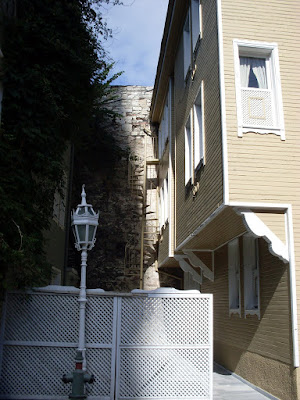Just busy. I'm studying in college, and at the masjid attached to my college, and tutoring English, so I don't get on the internet much. I've been trying to convince the school to stop using Internet Explorer 6, but no dice so far. It's a miracle it even still sort of works.
I've been jumping out of my skin several times every day (and night) when the fire alarm goes off. It's definitely winter now, or what passes for winter here, because the girls are leaving things to cook on the electric heaters, and of course forgetting about them and setting the fire alarms off. It would not be as annoying, if not for the fact that most of the girls in the dorm stay up most of the night, so that's when the majority of the alarms go off, and they won't go and shut them off. Getting woken up and scared out of my wits by the extremely loud bells a few times every night is getting really irritating.
I'm afraid that one day there actually will be a fire (not that it would be that big a deal, since there's not much that could burn), and I'll have rolled over and gone back to sleep, and we'll all suffocate, so I get out of bed and go deal with the alarm, and try to be patient with whoever set it off. My strong fear of fire seems very unreasonable to everyone here; I think it stems from growing up where everything was made of wood or fabric, seeing houses go up in flames like piles of tinder as a child, and having fire safety drilled into me in elementary school. I suppose to a group of very inexperienced girls who have never seen fire, it doesn't seem like anything to get worked up about.
Happy New Year to everyone :)
I've been jumping out of my skin several times every day (and night) when the fire alarm goes off. It's definitely winter now, or what passes for winter here, because the girls are leaving things to cook on the electric heaters, and of course forgetting about them and setting the fire alarms off. It would not be as annoying, if not for the fact that most of the girls in the dorm stay up most of the night, so that's when the majority of the alarms go off, and they won't go and shut them off. Getting woken up and scared out of my wits by the extremely loud bells a few times every night is getting really irritating.
I'm afraid that one day there actually will be a fire (not that it would be that big a deal, since there's not much that could burn), and I'll have rolled over and gone back to sleep, and we'll all suffocate, so I get out of bed and go deal with the alarm, and try to be patient with whoever set it off. My strong fear of fire seems very unreasonable to everyone here; I think it stems from growing up where everything was made of wood or fabric, seeing houses go up in flames like piles of tinder as a child, and having fire safety drilled into me in elementary school. I suppose to a group of very inexperienced girls who have never seen fire, it doesn't seem like anything to get worked up about.
Happy New Year to everyone :)

















.JPG)



.JPG)

.JPG)
.JPG)



.JPG)





















